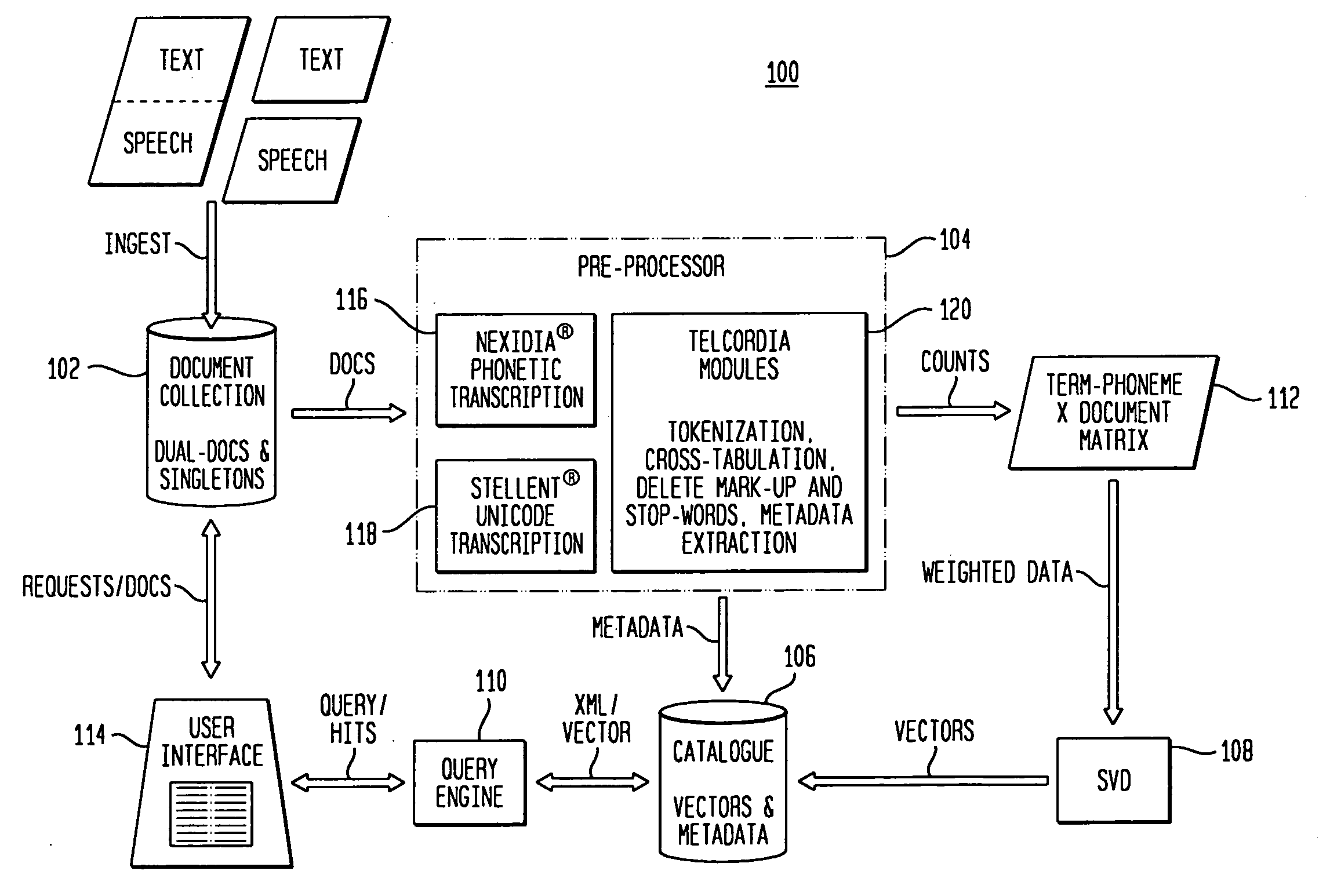Concept based cross media indexing and retrieval of speech documents
a cross media indexing and speech document technology, applied in the field of semantic indexing technology, can solve the problems of low recall and difficult indexing, searching and retrieving the content of spoken documents, and achieve the effect of reducing both the error rate and the cost of indexing speech
- Summary
- Abstract
- Description
- Claims
- Application Information
AI Technical Summary
Benefits of technology
Problems solved by technology
Method used
Image
Examples
Embodiment Construction
[0007] Referring to FIG. 1 there is shown schematically an embodiment of the indexing system 100 comprising the present invention. The system includes Ingest / Collect Documents 102, Pre-processor / Register Documents 104, Catalog Documents 106, Augment Catalog (SVD) 108 and Query Engine / Catalog 110. Processing begins when a machine or human places a set of documents in a Document Collection Area 102. A Librarian registers these documents and prepares them for cataloguing. Cataloguing creates a record of metadata, both textual and numeric, for a document in a database, and applies all the additional processing needed to compute a vector space in which all documents, along with their terms and phonemes, are indexed. The catalog may be regularly augmented with new documents by following the same Ingest / Collect-Register-Catalog sequence. However, with catalog augmentation documents are indexed but not used to compute the vector space. Moreover, End Users can regularly query the catalog, it...
PUM
 Login to View More
Login to View More Abstract
Description
Claims
Application Information
 Login to View More
Login to View More - R&D
- Intellectual Property
- Life Sciences
- Materials
- Tech Scout
- Unparalleled Data Quality
- Higher Quality Content
- 60% Fewer Hallucinations
Browse by: Latest US Patents, China's latest patents, Technical Efficacy Thesaurus, Application Domain, Technology Topic, Popular Technical Reports.
© 2025 PatSnap. All rights reserved.Legal|Privacy policy|Modern Slavery Act Transparency Statement|Sitemap|About US| Contact US: help@patsnap.com


